Menu
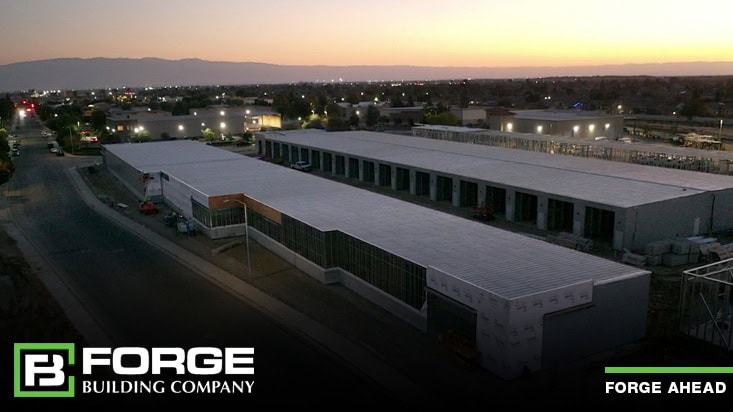
Optimized Unit Mix & Market-Driven Design is the process of aligning your facility’s layout and unit sizes with real-world market demand, site conditions, and long-term investment goals. It goes beyond simply maximizing rentable square footage. It’s about designing a space that reflects how people in your market actually use storage. This approach ensures the right mix of unit types, optimal traffic flow, and long-term flexibility. All of which directly impact occupancy, tenant satisfaction, and return on investment.
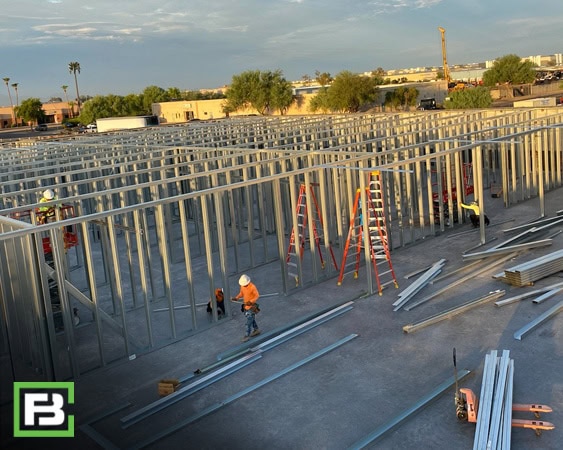 At Forge Building Company, we believe great buildings start with great design and that begins with a strategic, market-driven approach to unit mix and layout planning. For Forge Building Company, planning is the bedrock of our operations. We understand that the success of your construction project relies on thoughtful layout considerations and comprehensive site analysis. Using our team of experts, we specialize in crafting strategic site plans that optimize space utilization, maximize unit mix, and enhance efficiency. This ensures your facility is carefully tailored to maximize your return on investment.
At Forge Building Company, we believe great buildings start with great design and that begins with a strategic, market-driven approach to unit mix and layout planning. For Forge Building Company, planning is the bedrock of our operations. We understand that the success of your construction project relies on thoughtful layout considerations and comprehensive site analysis. Using our team of experts, we specialize in crafting strategic site plans that optimize space utilization, maximize unit mix, and enhance efficiency. This ensures your facility is carefully tailored to maximize your return on investment.
Modern self storage isn’t one-size-fits-all. More and more developers are combining multiple storage types in one facility to meet a broader range of needs. At Forge, we make that possible. Whether you’re in the planning stages of developing your first self storage facility from the ground up, have purchased an existing facility and want to upgrade, are developing RV and boat storage condos, or are expanding your current site, Forge will help you design an optimized site layout and unit mix that maximizes space, enhances tenant experience, and deliver long-term ROI, ensuring long-term performance. When you work with the steel building experts at Forge, you gain a team of experts that specializes in custom-tailored solutions built for today’s market and tomorrow’s.
Effective communication is crucial in the realm of successful project planning and execution. Thus, we prioritize open lines of communication with our clients, subcontractors, and other stakeholders throughout every stage of the construction process. Regular meetings, progress reports, and collaborative workshops ensure that everyone remains informed, engaged, and aligned toward the common goal of project success.
By fostering a culture of collaboration and transparency, we create an environment where ideas are shared, challenges are addressed, and solutions are implemented swiftly. This proactive approach not only minimizes disruptions but also accelerates project timelines, ultimately delivering superior results that exceed expectations.
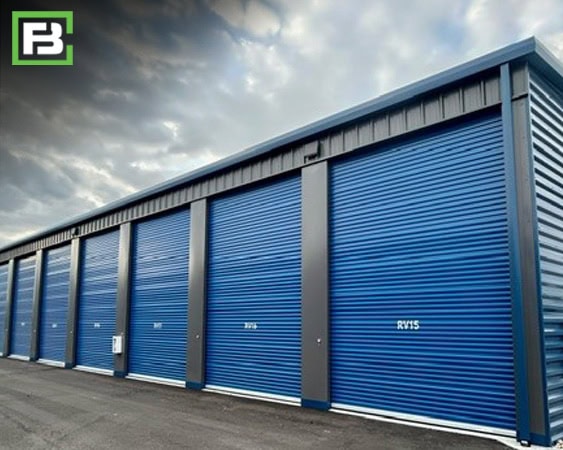 Not all storage units are created equal. The right combination of unit sizes directly impacts occupancy rates, tenant retention, and revenue per square foot. An undersupplied unit size in your market can lead to missed opportunities, while an overabundance of the wrong sizes can leave you with underutilized space and lower returns.
Not all storage units are created equal. The right combination of unit sizes directly impacts occupancy rates, tenant retention, and revenue per square foot. An undersupplied unit size in your market can lead to missed opportunities, while an overabundance of the wrong sizes can leave you with underutilized space and lower returns.
That’s where Forge comes in. Our team uses real market data, demand studies, and decades of experience to help you design a facility that aligns with your location’s demographics, competition, and growth trends. We guide you in creating a balanced mix of small, medium, and large units or specialty units like boat and RV storage or flex space to serve both short-term needs and long-term investment goals.
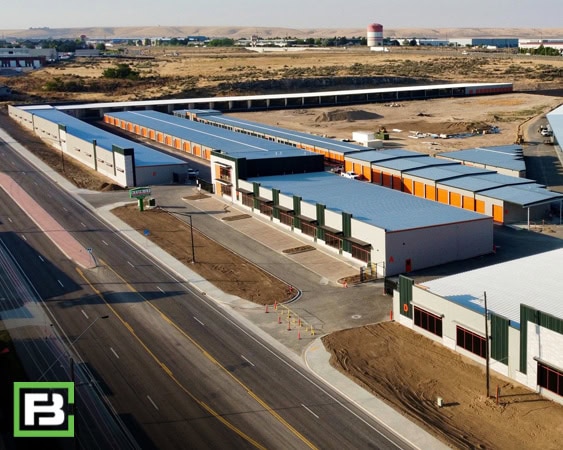 Optimizing your layout isn’t just about fitting the most rentable square footage on a site. It’s about smart design that considers:
Optimizing your layout isn’t just about fitting the most rentable square footage on a site. It’s about smart design that considers:
Our team works hand-in-hand with developers, owners, and general contractors to design layouts that improve tenant experience. In addition to reducing operational headaches, and driving maximum value. These principles are especially powerful when applied through flexible, scalable steel building systems, which allow for efficient construction while preserving long-term adaptability.
When you partner with Forge, you’re getting more than a steel building, you’re getting a strategic partner. We bring insight to the design phase, ensuring your plans are both feasible and cost-effective. That means fewer revisions, shorter construction timelines, and a facility that performs from day one.
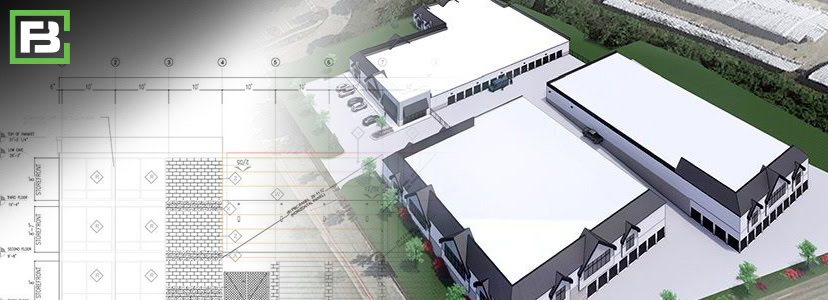
Whether you’re entering a new market or expanding an existing portfolio, Forge is here to help you design smarter and build better. Check out our building types, then let’s turn your vision into a facility that delivers for years to come.
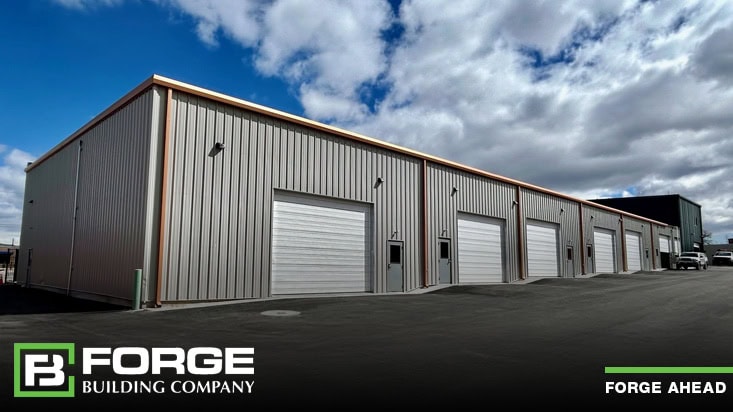
The commercial real estate and construction landscape is evolving, and within the shifting dynamics lie significant opportunities. (See Forging Ahead: Construction Resilience and Opportunity in 2025.) As developers and investors navigate market uncertainty, one sector is demonstrating growth potential for 2025: Small Bay Flex Space.
Small Bay Flex Space is typically industrial-like buildings with individual bays ranging between 1,000 and 5,000 square feet. These units lend well to tenants looking for spaces to cater to their small businesses. These Small Bay Flex Buildings tend to be incorporated into multi-mix commercial development projects; however, they work in industrial areas, too. There is a wide variety of different types of businesses that need this type of space. Here is a list of different types of businesses that are often seeking out these small bay units.
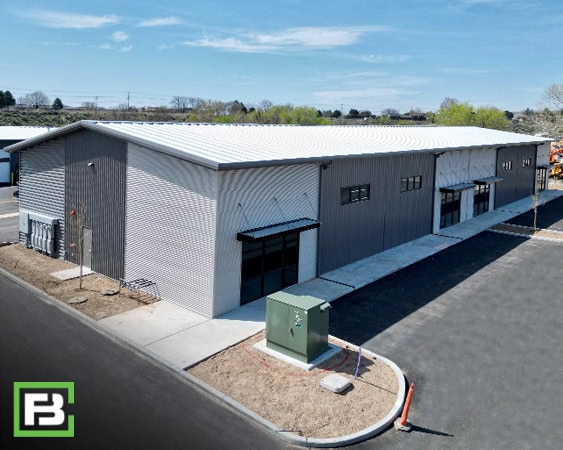

There are several ways that these buildings can be structurally designed. The two main framing options are structural steel or light gauge steel, which provide the primary support for the building.
Pre-Engineered Metal Buildings (PEMBs) use rigid structural steel frames that can provide a clear span for the interior of the building. This means that there are no interior walls that provide support for the roof structure. Going with a PEMB design gives owners and developers flexibility to determine the bay size for each tenant's needs. This means that if each bay is 1,000 square feet and a tenant asks to rent two bays, the demising wall can be built to accommodate.
The other option for these buildings is for the framing to be completed using light-gauge steel, also known as Cold-Formed Steel (CFS). This is only an option when the width of the bay or unit is within range to support the roof structure. When this option is available, it cuts the cost of the steel building package down dramatically. However, the walls that are separating the units cannot be moved, as they are load-bearing and support the roof. This limits the flexibility to meet tenants' needs, but could be an option if the cost of construction is too much to go the other route.

The aesthetics of the Small Bay Flex space can vary greatly from project to project. The decision on how extravagant to make the exterior look depends on the type of tenant that is likely to rent the space and where the buildings are being developed. For instance, if the building is going to be developed in an industrial area and cater more to the construction or light manufacturing industry, then a simple exterior look may be completely acceptable. However, if the building is going to be developed on a main road catering to those who may have clients, then dressing up the look with a nice storefront and exterior building canopies may be necessary. It all boils down to who the tenant is likely to be and what their needs are. The possibilities and options are plentiful.
There is a growing trend of self storage investors adding Small Bay Flex Space to their portfolios. This asset class has many similarities to the types of tenants who sometimes rent self storage units. For instance, a small contractor could rent a few 10x20 drive-up units to store their equipment and materials. These types of tenants are great candidates for a Small Flex Bay Unit as their business grows and expands. There are also many developers who are incorporating these buildings into their self storage development projects. Some municipalities are not as favorable to self storage development; however, their city or town may have a great need for flex space. Incorporating these types of buildings into a development could sway a project's approval by the jurisdiction. The other advantage to including these buildings in a development is that the rent for them is quite a bit more than what can be charged for a regular self storage unit. If there is high demand, they could lease up quickly, giving the proforma for the investment extra cash flow while the self storage part of the development is in lease up. Another favorable attribute to mention about the tenants that lease up these small bay spaces is that they tend to stay for a while. That is, there isn’t a constant need to find a new renter for the space.
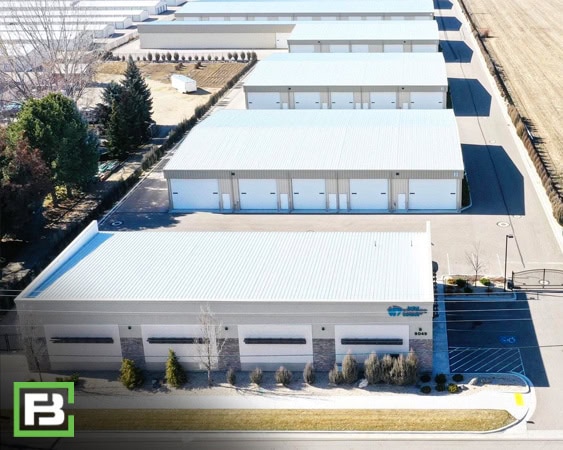
When considering whether to develop a Small Bay Flex Building, there are many considerations. It is essential to make sure that the right experts are on your team. At Forge Building Company, we understand these types of buildings and the plethora of options available. It is at our core to be that resource for our clients in helping them make the decisions that meet their investment needs. Many times, this may mean doing a pricing exercise to show the difference in the steel building design costs. We also have an exceptional drafting team that can provide a building layout, elevations, or even a simple rendering that illustrates the vision of a client. And lastly, we are aware of the pitfalls that can come up during the construction of these buildings. With this experience, we guide our clients around these, giving them a project that is delivered on time and within budget.
Contributing Editor: Melissa Anderson, Forge Building Company
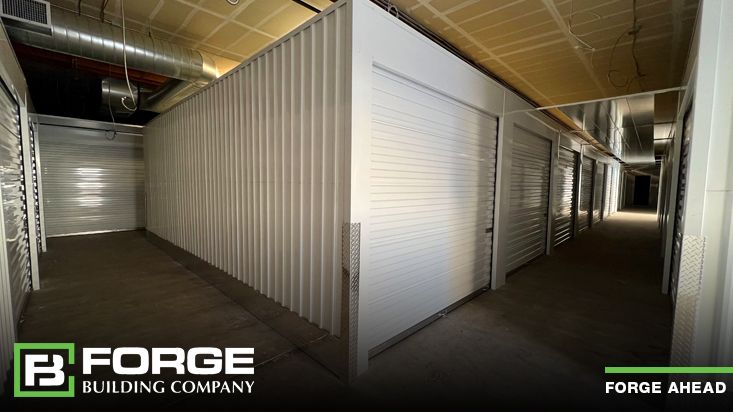
With the recent pandemic and decline in big-box retail, there is now a significant inventory of vacant buildings out there for sale. The current trend of office vacancy rates increasing, building owners are seeking creative ways to make that empty space generate profit again. As such, some are converting these structures into self-storage facilities or selling them to others who wish to do so.
While this development path can be an efficient time and cost-saver, there are important considerations. This blog will help you decide if conversion of an existing building is the right path for you to be able to properly transform a structure into a well-built self storage facility.
Like any building project, there are definitely pros and cons to consider for conversions of existing buildings into a self storage facility. Here’s our take.
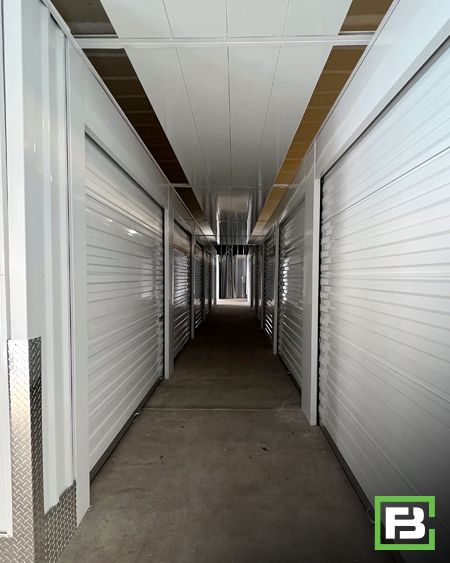 Pros. Because of the amount of inventory out there, you may be able to purchase an existing building for less than it would cost to build it, so after completing the renovation, you’ll have a lower cost basis for your project. Another advantage is that if you maintain the footprint, access points, and site circulation, you may also be able to avoid going through the site-plan approval process with the city, which can save money and simplify entitlements. These advantages add up to an expedited construction schedule at a lower cost.
Pros. Because of the amount of inventory out there, you may be able to purchase an existing building for less than it would cost to build it, so after completing the renovation, you’ll have a lower cost basis for your project. Another advantage is that if you maintain the footprint, access points, and site circulation, you may also be able to avoid going through the site-plan approval process with the city, which can save money and simplify entitlements. These advantages add up to an expedited construction schedule at a lower cost.
Cons. On the flip side, since the structure wasn’t originally built with self storage in mind, it may not always be located in an optimal location for visibility. In addition, the design needs to adapt the building can cause irregular unit sizes and long travel distances from loading areas to units. One other consideration is zoning. This can be a problem since many vacant buildings in commercial zones don’t allow for self storage. Finally, it is important to assess the acquisition price and building condition against all the costs of the conversion and anticipated profits down the road to determine if conversion is the right business strategy.
Along with the pros and cons mentioned above, following are some other considerations.
For any self storage building project, whether it’s a conversion or one being built from the ground up, your site selection is the number one consideration. Retail-like visibility is always preferable to being out of sight. No amount of online marketing can replace the free exposure of being located along a frequently driven, high-traffic route. Proximity to potential clients is key.
One of the most restrictive challenges in pursuing a conversion project is finding a building where self storage is permitted. Thankfully, many jurisdictions appreciate creative solutions to filling empty structures. A zoning authority that has a positive view of storage as a community-serving use will aid your cause; however, if storage is still considered an industrial use that should remain on the periphery of communities, your development path is going to be all uphill, costing excessive time and money.1
As in any type of self storage build, it is critical to understand rates, occupancies, and the competitors around you. The team at Forge always recommends that a complete and thorough market study be completed. It is also key to investigate whether or not self storage is allowed in the zone where the building is located. If it is, then you may need a conditional-use permit or rezoning permit.
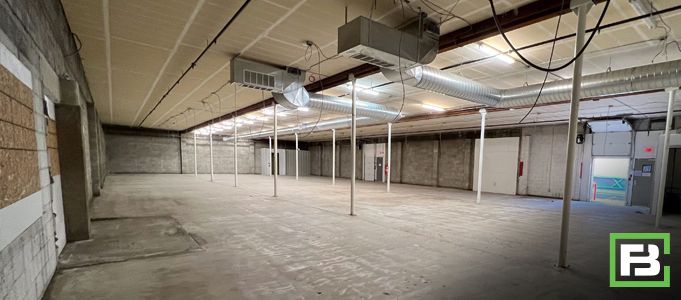
Old Idaho Statesmen Building Before Conversion to Self Storage
Forge also always recommends that you check the title and survey to determine if there are covenants, conditions, and restrictions, easements, and other agreements that could impact your ability to convert the building. It’s common, especially with retail properties, to have private restrictions that prohibit self storage, easements that impact circulation, common-area maintenance fees, shared utilities, etc. Environmental problems are also common, especially in older manufacturing and warehouse facilities. Thoroughly understanding your site and its history is a key part of having a successful project.
When looking at starting a conversion project, typically a commercial zone 2 (C-2) location is the most desirable in a market area. It will typically have a large and destination-bound traffic count and great visibility. In addition, facilities in C-2 typically rent up faster than those in light industrial 1 (I-1).2
It is also good to eliminate any potential site that cannot accommodate a minimum of 50,000 net rentable feet. This is typically optimal for cost-efficient management.
Once you have your site selected, you will need to assess the structure itself – the roof, structure, parking lot, mechanical, etc. In addition, many old buildings have refrigeration systems and other items that are costly to remove. Asbestos, and other hazardous materials remediation may also need to be addressed.
Floor load. If the building you are looking to convert is a multi-story building or has a mezzanine, it is key to ensure the floor load is adequate for self storage use.3 One of the most significant costs in the conversion of office space to self storage will be the assessment and likely remediation of the structural system. Most office buildings have been designed and constructed with a much lower live load than what’s required for self storage, often rated for 50 to 80 pounds load per square foot (PSF) compared to 125. That’s about a 50 percent deficit.
To help you calculate the loading design, it is key to do field measurements with limited destructive testing and a structural engineer. (See our blog titled, “Designing a Self Storage Facility – How to Select Your Design Team”)
If the structural engineer finds that the structure doesn’t meet the required loading for self storage, there are still solutions. Adding light-gauge bearing walls is the most cost-effective, while reinforcing existing beams could also be sufficient. Reinforcing under-bar joists is the costliest solution.
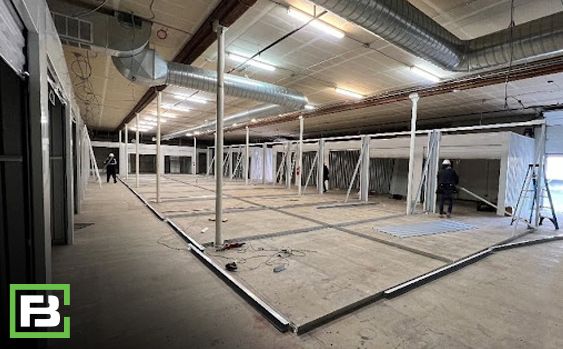
Old Idaho Statesmen Building During Conversion to Self Storage
Rentable Space. Most urban and suburban self storage facilities are 100,000 to 120,000 gross square feet. However, taking into account elevators, stairs, and corridors may reduce the rentable yield to 75,000 to 90,000 square feet. It’s key to know what amount of rentable square footage is necessary to be profitable.
Another consideration you will need to make in this same area of the design, is the average unit size and mix.
In a standard conversion, you’ll use the existing building without changing the overall footprint. This is the easiest, most straightforward type of project. Depending on the building, it is also common to add one or more floors in the existing footprint.
Increasing the rentable square footage of the building through a footprint expansion or the addition of more structures can be another great option. This may include adding drive-up units or vehicle storage in the rear or side of the building.
At the end of the day, the design of your conversion will play a significant role in its success.
Thermal envelope. Energy-code compliance has only been around since 2012. Therefore, the level of renovation necessary will depend on the existing wall, slab, and roof.
Elevators. Check to see if the existing elevators are in your tenant loading/unloading area. A self storage elevator should have a 4,500-pound capacity with a taller cab to accommodate large pieces of furniture.
Loading area. An appropriately sized loading and unloading area with ample space to maneuver large vehicles, such as moving trucks, is key. Your loading area should have a minimal vertical clearance of 14 feet. It should also be convenient to the building interior, particularly the elevator.
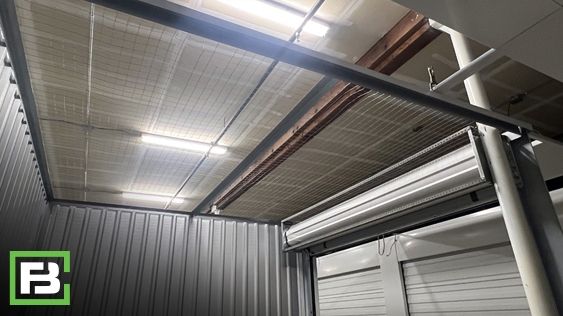
Old Idaho Statesmen Building After Conversion to Self Storage
Self storage has some of the easiest mechanical systems of any real estate type. In the case of an office conversion, the goal is to minimize replacement. The preferred self storage HVAC system is a residential-sized split system with minimal to no ductwork. Boilers and other perimeter unit systems lack efficiency.
A sprinkler system will likely be a code requirement for self storage structures of 100,000 square feet or more. If your building has such a system already, the upgrades should be minimal. The large open areas with no ceilings allow for an optimized sprinkler-head layout.
The last item to evaluate is the electrical system. Typically, the system already in place is likely to be sufficient to meet your self storage needs, but plan to replace the lighting to more energy-efficient LEDs with motion sensors.
The exterior look of the building is key, especially to potential client driving by. That’s why it is key that your building stands out. Fresh paint, clear, visible signage and nice landscaping increase the curb appeal.
The building-conversion process always comes with extra surprises. Therefore, it’s important to carefully select a professional design and construction team with self storage experience such as Forge Building Company (see our blog titled, “Designing a Self Storage Facility – How to Select Your Design Team”).
Self storage conversions are a great alternative to ground-up development. Evaluating the site, assessing the building, designing the project, and understanding the costs will provide you the information you need to make a wise decision. Finding one that meets the criteria for self storage with limited need for remediation can be a tricky, so working with the team at Forge Building Company can make the process much easier. The budget savings of building a self story facility from a conversion can be 25% to 50%. Give the team at Forge a call today, we would love to help you convert an existing building.
Works Cited
1. Brown, R. (2023, March 22). Inside Self Storage. Retrieved from Insideselfstorage.com: https://www.insideselfstorage.com/conversions/converting-old-office-buildings-outstanding-self-storage-facilities
2. Pollack, L. (2012, July 20). Inside Self Storage. Retrieved from Insideselfstorage.com: https://www.insideselfstorage.com/conversions/retrofitting-building-your-dream-self-storage-facility-guide-intrepid-souls
3. Wyckoff, S. (2021, January 21). Inside Self Storage. Retrieved from Insideselfstorage.com: https://www.insideselfstorage.com/conversions/self-storage-conversion-projects-pros-and-cons-building-assessment-design-pitfalls-and
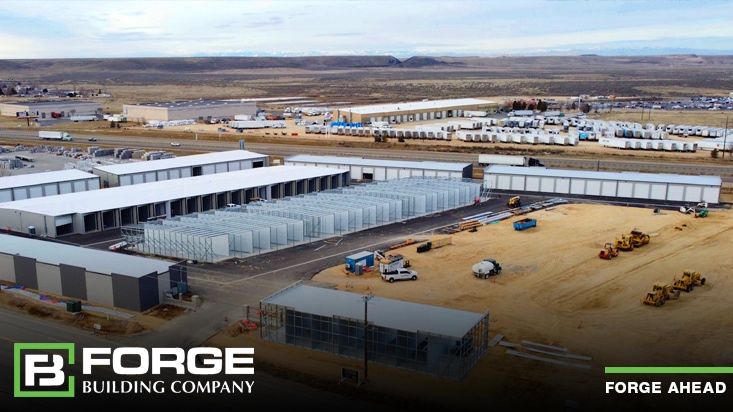
Designing and developing a profitable self storage facility requires much more than picking the perfect location and unit mix. The vendors you select and the team you work with can impact decision making and impact the bottom line.
In the early years of self-storage, many facilities simply consisted of single-story, garage-style structures built from a flat slab with concrete block walls and simple wood-truss roofs. Today, with a scarcity of available land, many self-storage owners and investors are building multi-story units that are climate controlled and energy efficient. Materials being used are very different as are the requirements for new construction and building codes, especially those mandated by new standards of energy efficiency.
However, before you build or start down the design planning road, it is imperative that you engage a company to do a market feasibility study. This is a critical first step since most investors and developers want to know if the property will be profitable before going into the design phase.
Once your market feasibility study is complete, the Forge team will provide a complimentary site layout in this preliminary phase of the project. This site layout can then be turned into AutoCAD drawings so the architectural team can make any necessary updates and incorporate these into the architectural set of drawings (see below).
So, who are the key players you will need in your design team? Below we outline the major vendors and how they will contribute to the development of the most aesthetically pleasing, profitable, and cost-effective self-storage facility.
Now that you know who the players are, the next question is how do you choose the right companies to provide these services? Just like with many service-oriented businesses you’ll want to choose a business that has a solid reputation, comes from a referral, or meets your expectations with initial interactions. Beyond the basics of choosing a “good” company to work with there are some key attributes specifically for the architect, structural engineer, and civil engineer that you want to take into consideration.
First, it is absolutely critical to select an architect and structural engineer that have experience specifically with self storage. There are aspects to self storage that are very different from building a multi-family or commercial development. The architect and structural engineer don’t have to be local to the area that you are building in, however, they need to be able to effectively obtain information required in order to communicate with you about your project. It's a little bit of a different situation with the civil engineer.
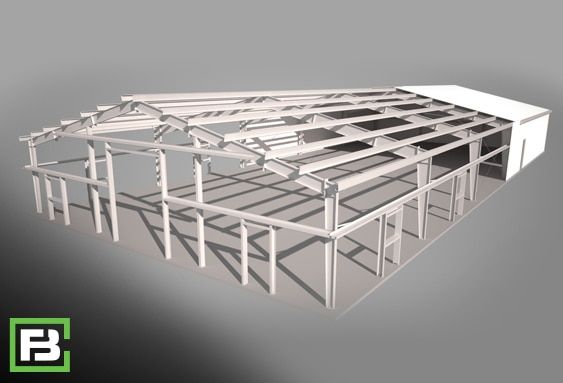
It's a good idea to select a civil engineer that is familiar with the region in which the project is being built. The reason for this is you want the civil engineer to have experience and knowledge specifically with the conditions of the soil within a particular area. Different parts of the county have different types of earth that needs specific considerations. For example, building in the wetlands of Florida is going to vary greatly from building in the dry dessert of Arizona.
Another thing to keep in mind is that these companies should be working collaboratively together. If buildings need to move because of where the retention pond is, then the architect will need to make changes to the layout. If this causes a building size to change, then the structural engineer is going to have to adjust their drawings. So, with these things in mind, make sure that every player has the bandwidth to take on another project. To keep progress moving along, you don’t want anyone held up because one of the team members doesn’t have time.
As you are making selections on your design team, it is a good idea to make your selection on a steel building contractor. Many of these contractors, like Forge Building Company, offer structural engineering as part of their services. The benefit of bringing a steel contractor into the design phase is that it allows them to provide insight on best practices that they have seen over the years, as well as allow them to show where there may be areas to value engineer the project, ultimately saving you money.
When selecting a steel frame building contractor, it is key to work with one that has created custom steel buildings of every shape and size. Here are some questions to ask when making your decision on who to work with:
The right steel building contractor should also be able to provide:
For more considerations, also see our blog “Commercial Steel Building Developers.”
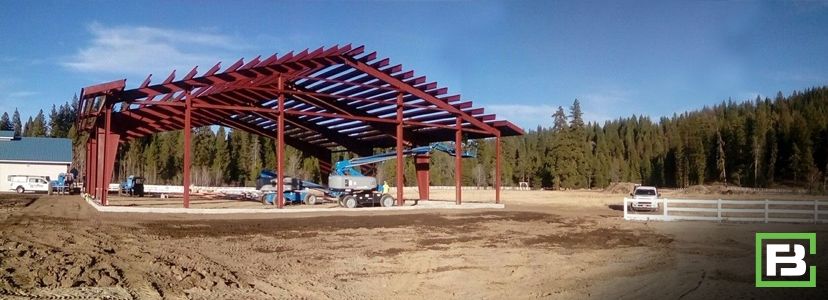
For the last 15 years, Forge Building Company has partnered with investors and developers on over 500 self storage projects. With our experience in this space, Forge can provide all the necessary vendors and information needed for your project to be a success – from start to finish.
Here is how we can help. Forge offers:
Whether you are considering your first or your fiftieth self storage project, we are ready to partner with you. Forge knows self storage and has built over 60 million square feet of it.
To hear more about what our clients are saying about working with Forge as a one-stop shop, see https://www.youtube.com/watch?v=P7WFCRms2kI.
Let’s begin the discussion on your next project. Click here to connect!
Contributing Editor: Melissa Anderson, Forge Building Company